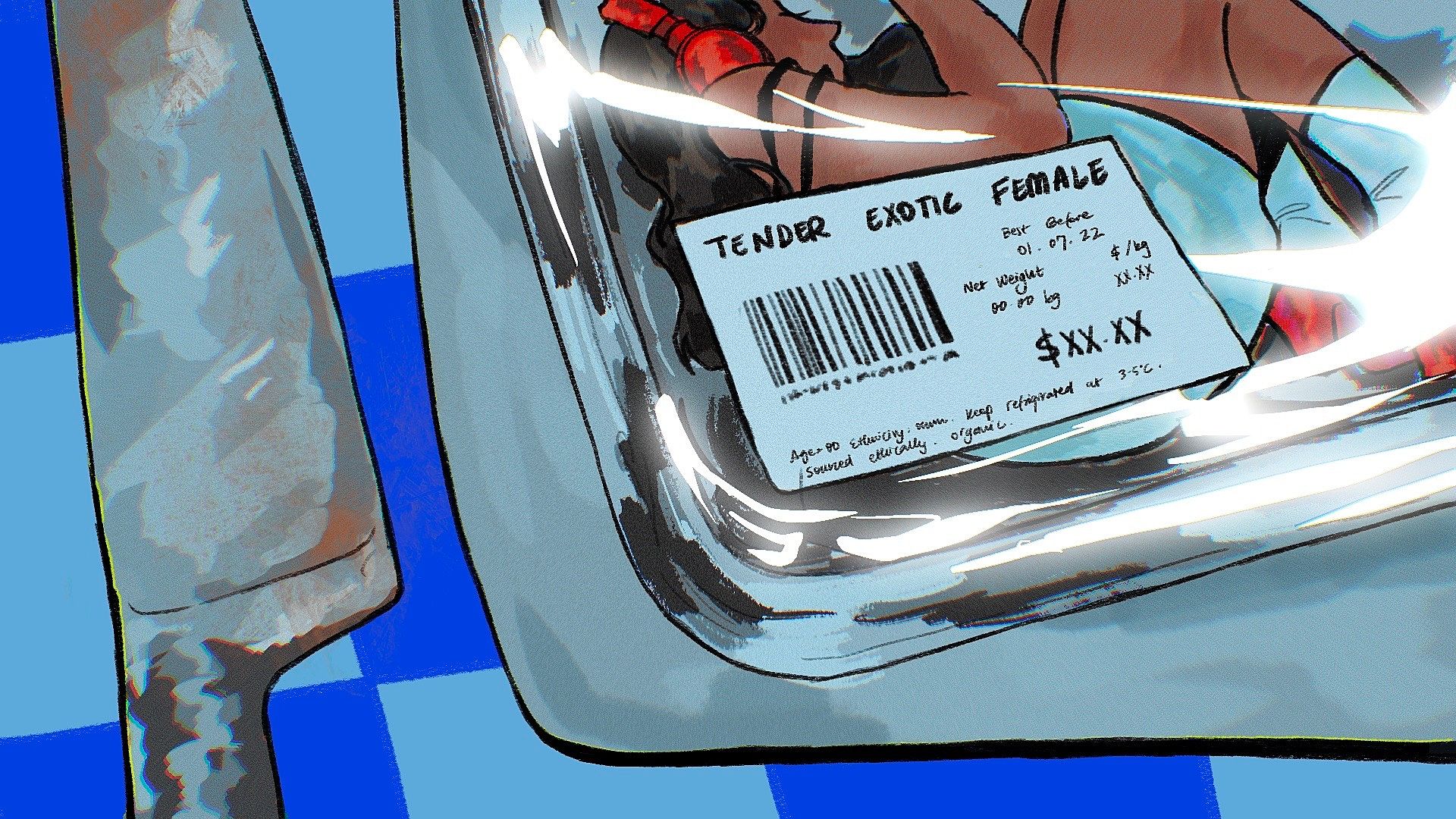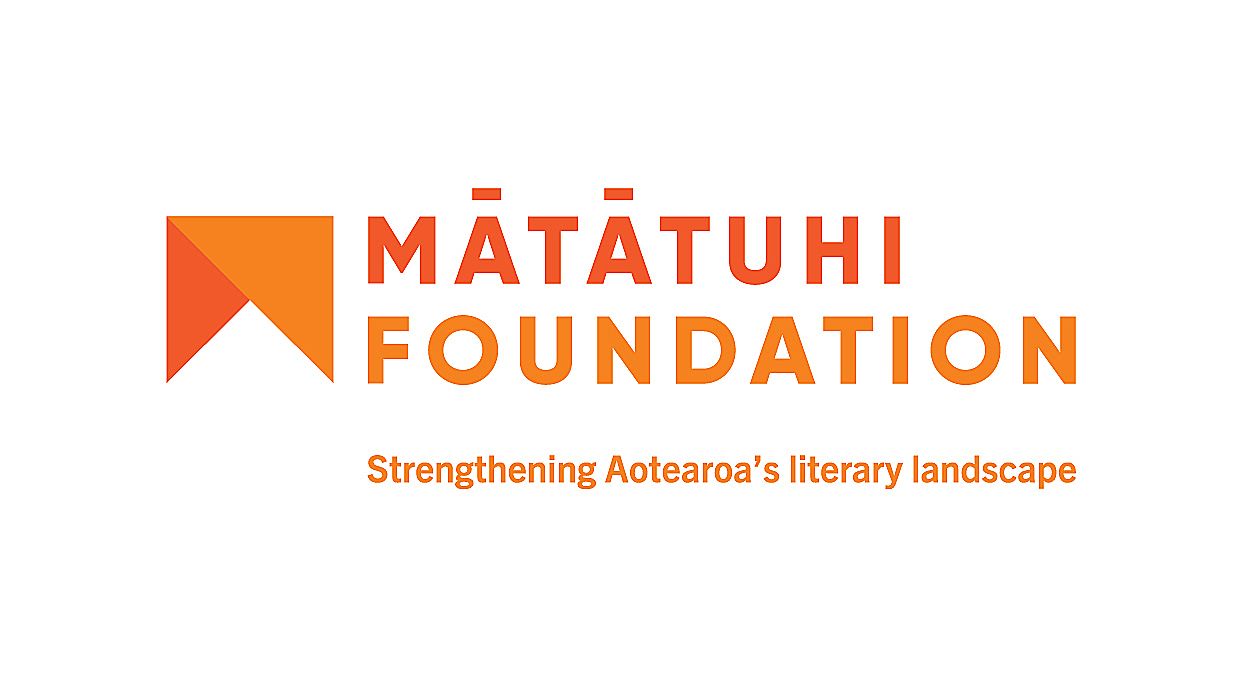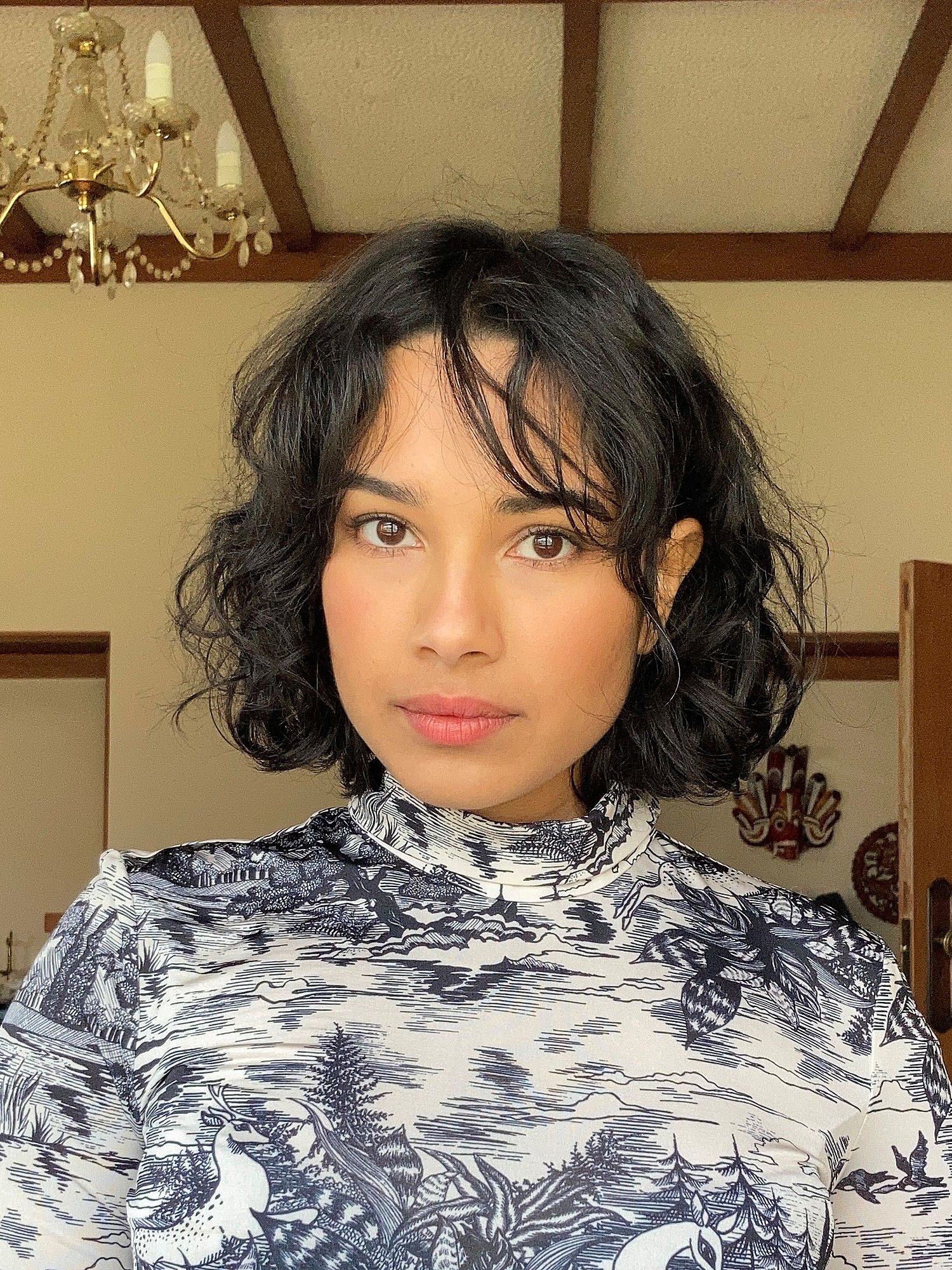Wresting the Lotus – Navigating Orientalism, Desire and Harm through My Brown-Girl Body
Dinithi Nelum Bowatte on navigating orientalism, desire and harm through the power of her brown girl body.
呼吸//Breathe is a series in collaboration with feminist researcher, PhD candidate, community organiser and Migrant Zine Collective founder Helen Yeung 希琳. It aims to capture the multi-faceted, complicated and often contradictory emotions behind survivorship for Asian migrant women and marginalised genders. The Chinese characters 呼 (fu1) 吸 (kap1) mean to exhale and to inhale. When combined, they make up the action of breathing, often unnoticed but vital for our existence and living. The series invites three writers to document emotions such as hope, anger, grief, healing and tenderness, and what it’s like continuing to breathe in the present and every day. 呼吸//Breathe features an editorial by Helen Yeung 希琳, and essays from Dinithi Bowatte, Nalin Samountry and an unnamed Guest Contributor. Each piece is accompanied by artworks from illustrator Liz Yu.
Please note that this series contains sensitive conversations around abuse and harm and may be upsetting for some survivors to read. This essay contains reference to sexual misconduct.
During high school, circa 2013, I used Tumblr every single day. I would come home, leave my homework in my bag, sit in front of our family computer and re-blog pretty pictures to my heart’s content, late into the evening. For a South Asian who took the ‘the Asian five’ (Biology, Chemistry, Physics, English, Maths) through school, Tumblr was my place to be creative. It was where I could be things other than what was expected of me. In glorified versions of my memory, this is someone encountering new tastes, ideas, music, styles, even sexualities, for the first time.
Recently, I went back through the archives of that blog, and was taken aback by what I saw. Though I couldn’t really say what I’d expected, I hadn’t pictured coconut drinks in tanned white hands, or elephant tattoos on tanned white ankles. There were more tennis skirts on long white legs, and smudged eyeliner on heavy white lids than I thought there’d be. I was almost exclusively re-blogging photos of white women, and things associated with them – high fashion, runway beauty, tropical veganism. These were not things associated with me, or people like me.
Being South Asian in early-2010s Aotearoa meant you were, by default, a vegetarian tech kid who spoke exactly like Apu. You were definitely Indian, always smelled like curry and were probably a terrorist. No way in hell would a photo of someone like you ever make its way onto a Tumblr blog hoping to reach a chic audience. At best, someone like me could be cool for a brown girl.
Being South Asian in early-2010s Aotearoa meant you were, by default, a vegetarian tech kid who spoke exactly like Apu.
Instead of using Tumblr to creatively present what could be desirable about me, I used it to present myself as if I was someone who fitted the socially acceptable definition of desirability. My Tumblr was essentially an impersonation of someone society would rather I be, that I could never be. If at the heart of catfishing is a desire to be desired, I spent all my years on Tumblr being a catfish. I was rewarded for my efforts with a follower count that grew steadily.
Thanks to feminist scholarship, we are reminded that desire is inherently political. As Amia Srinivasan puts it in her book, The Right to Sex: Feminism in the Twenty-First Century, “who is desired and who isn’t is a political question, a question answered by more general patterns of domination and exclusion.” My seeking to be someone else on Tumblr wasn’t pre-political, it came from a self-perceived lack I thought I could fill by being the thing I knew to be desirable. If ‘the thing I knew to be desirable’ is politically constructed, so too must be the reason I thought I needed to be that thing.Surely my self-perceived lack wasn’t something I invented myself, but something that was forced upon me.
Those high-school years were formative in many ways. My body, changing before my eyes, started attracting the kind of attention it had never known before, which began with tooting and yelling from cars. This, I was assured, was a wee inconvenience us girls had to put up with. I also started having people, often women, usually white, suddenly scrambling to tell me how exotic I was. Again, not to worry – these were compliments.
But then my body started attracting more sinister attention. I had anons on ask.fm requesting I sit on their face, asking whether I kept a shaved or bushy pussy. I landed a boyfriend who liked putting his hand up my shirt and having a play while other people were around. Despite my discomfort, I felt I wasn’t allowed to ask him to stop, because I was his girlfriend so he had a right to me and my body. When I broke up with him, he was very quick to inform me of how chivalrous he’d been for not making me sleep with him, despite pressure from his friends. By this point in my life, I’d only had my period for three years.
Eventually, the changes to my body slowed down. Unfortunately, the formative experiences didn’t. There came another boyfriend. He didn’t like it when I wore a dress that showcased a bit of cleavage, because my breasts, of course, belonged to him. After him, I enjoyed many nights out clubbing with friends – until I found myself having to go home after being groped. Once, while I was waiting for my double cheeseburger at a McDonalds, a man grabbed my ass as security was throwing him out. Everyone saw, no one said anything. I guess it was my own fault, somehow. The experiences to come probably were too, then: the erection pressed against my ass in a packed crowd on New Year’s Eve; the man that repeatedly stalked me at the public library where I’d go to study; the man at the backpackers’ who frantically jacked off in the bottom bunk while the top bunk shook and squeaked around me.
How can someone like me make claims about my body being undesirable when so many people – men especially – seem to be desperate to claim a piece of it?
A thing I have learnt about harm and violence is that, sometimes, it looks a bit like desire, or what people think desire is. Without context, it can look like people wanting to touch you, feel you, know you and love you. But with context, it is actually people wanting to hurt you, own you, distort you and deny you. For many of us, our lives are made up of multiple political identities that intersect and intertwine, making themselves known and unknown as we go about the world. Our experiences of harm and violence are often determined by those intersections. Dominant narratives treat gendered and racial violence as if they are mutually exclusive, but they often happen on the same plane. This violence is made possible when, in the words of bell hooks, “the presence of the Other, the body of the Other” is “naturally” seen as “existing to serve the end of white male desires.” When a man fondled my breasts while walking past me in Mount Victoria Tunnel, he must have believed it was his right to. My existence served as his opportunity. How gracious of him, then, to have blown me a kiss as he walked away.
"in the words of bell hooks, “the presence of the Other, the body of the Other” is “naturally” seen as “existing to serve the end of white male desires.”
What struck me about Helen’s editorial for this series was the way they emphasised how fraught an experience it is to name harm and violence for what it is. I’ve found this especially so for violence that surreptitiously underlies the way you are “naturally” perceived. It feels contentious to call something a violation when it has been part of your day-to-day reality since early menses. But, as sex-working feminists Juno Mac and Molly Smith remindus, “the feminist movement cannot fight what it cannot name”. It is thus essential we name and shame the realities about our body’s relationship with society if, as Lana Lopesi says in her book Bloody Woman, we hope to disrupt single narratives and allow “other signs of life to bleed through”.
Typical perceptions of undesirability tend to evoke images of the outcast – alone, dirty and untouched. But could there be a type of politically constructed undesirability that renders some bodies hyper-accessible, hyper-available, to the touch and scrutiny of others? In line with Srinavasan’s quote, journalist Natasha Lennard recognises that “centuries of power operations [determine] our desiring tendencies – as well as the very terrain of what gets to be a choice, and who gets to be a chooser.” Within the politics of desire, some bodies are valued over others because they impart status upon those that associate with them. Bodies that contradict traditional narratives of what bodies should be (white, cis, able-bodied, thin) do not impart status upon those that associate with them as equals but can to those that seek to dominate them. Cultural codings specific to these ‘undesirable’ bodies often enable their hyper-accessibility or hyper-availability to society, opening them up to exploitation and abuse that work to keep them subservient. As Srinavasan notes, “these bodies can be violated with impunity and without consequence”.
Black feminists like bell hooks, for example, have crucially pioneered the way we think about gendered and racialised violence. Work like hers has exposed the way culturally fabricated stereotypes rooted in anti-Blackness often depict Black women as hypersexual, subjecting them to claims to and about their bodies by not just men.
For Asian and Middle Eastern women, orientalist narratives heavily dictate the way our bodies are culturally coded.
For Asian and Middle Eastern women, orientalist narratives heavily dictate the way our bodies are culturally coded. ‘Orientalism’, as coined by Edward Said, refers to the way antiquated Eurocentric ideas about ‘the Orient’ continue to be pervasive in Western thought. Said explains that, in the West, ‘the Orient’ is conceptualised as “a place of romance, exotic beings, haunting memories and landscapes, and remarkable experiences”, ever available for Western domination. When that imagery is imposed upon Middle Eastern and Asian bodies, particularly those of women and marginalised genders, we become objects of violence.
Said, for example, cites that 19th-century French novelist Gustave Flaubert introduced an influential model of the Oriental woman as someone who “never spoke of herself” and “never represented her emotion, presence, or history”, through his portrayal of an encounter with an Egyptian courtesan. In articles like The Orientalization of Asian Women in America, Asian feminist scholars identify that these insinuations are still present in modern characterisations of Asian women as submissive, obedient and sexual. The Asian woman is ‘exotic and sexy’, at once the ‘docile doll’ and the ‘diabolic dragon lady’. The duality of these stereotypes will be familiar to those of us in the diaspora – we are all too aware that our bodies are somehow ‘foreign’ enough to be unwelcome here, yet ‘familiar’ enough to be touched and discussed with arrogance. Notably, a number of scholars highlight that Asian women are seen as more sexually available than their white peers.
Notably, a number of scholars highlight that Asian women are seen as more sexually available than their white peers.
For South Asian women, specific Orientalist stereotyping is strongly tied to violent histories of colonialism. In an essay from the 1990s, Yasmin Jiwani notes that British colonial perceptions of South Asia as lands of “squalor, disease, overcrowding, rampant sexuality and excessive mysticism” reinforce modern Western impressions of South Asians. Our ‘overpopulation’ (who gets to decide there are too many of us, anyway?!) implies our ‘natural’ hypersexuality. In cultural representations, of which there are few, South Asian women are depicted as highly traditional, submissive, exotic/erotic creatures.
It is again bell hooks who helps me explain why white men, and sometimes women, are so eager for a piece of the South Asian woman’s body – for a piece of mine. She explains that encounters with ‘foreign’ bodies contain a “seductive promise” that counters the “terrorizing force” of a status quo that otherwise constructs identity as fixed and immovable. Similarly, with the consistent depiction of the Orient as “an arena of unleashed sexual desires and outlandish pleasures”, media scholar Meenakshi Gigi Durham recognises that a “momentary luxury” can be attained through the domination of ‘La femme orientale’. Our bodies provide an opportunity for their escape – just as ‘the Orient’ once did. In the song ‘Any Day’, from his album The Long Goodbye (which explores South Asian diasporic experiences in post-Brexit UK), Riz Ahmed croons,
“Wanna keep me in my lane / Still can’t pronounce my name / You called me your exotic holiday”
Like the corridors of the pyramids, or the Taj Mahal, our bodies also wear and tear as foreign hands run their entitled fingers over them.
In recent years, cultural representations of South Asians have only improved so much. In Brown Baby: A Memoir of Race, Family and Home, Nikesh Shukla discusses raising his young half-Gujrati, half-white daughter, who insists she’d rather be more like Mummy. Clearly, young Brown girls are still being convinced that whiteness is more valuable than their own uniqueness. Even I know that my lighter skin, straight nose and ‘Kiwi’ accent enhance my social palatability.
In Glitch Feminism: A Manifesto, Legacy Russell discusses how people from socially marginalised backgrounds have begun occupying “the digital as a means of world-building”. They suggest that when people from marginalised backgrounds transform and take up online spaces in their unique ways, our society ‘away from keyboard’ will come to reflect those spaces. This gives me hope, and I want to participate. But where my corporeal body’s accessibility is constrained by the physical space surrounding it, anyone anywhere can access the version of it I put on the internet.
While this means that other Brown girls can find me and see my body proudly taking up digital space in ways I never got to see on Tumblr, it also means racists, misogynists, xenophobes and other extremists can access my already fragile body, too. How might I take part in building online spaces that uplift and empower, while also looking after my safety and wellbeing? From what I can tell, my Black, Indigenous (in Aotearoa, Māori), Pacific, East and Southeast Asian, Middle Eastern, Latinx, Trans, Queer, fat, disabled, and sex-working sisters and siblings are asking similar questions. I’m thankful to be in their company as we work together to push the world we deserve through the mud, towards the light of day.
Reading list:
Aki Uchida, “The Orientalization of Asian Women in America.” Women’s Studies International Forum 21, no. 2 (1998): 161–174.
https://doi.org/10.1016/S0277-5395(98)00004-1
Amia Srinavasan,The Right to Sex: Feminism in the Twenty-First Century. New York: Farrar, Straus and Giroux, 2021.
bell hooks, “Eating the Other: Desire and Resistance.” In Black Looks: Race and Representation (21–39). Boston: South End Press, 1992.
Edward Said, Orientalism. New York: Vintage, 1979.
Lana Lopesi, Bloody Woman. Wellington: Bridget Williams Books, 2021.
Legacy Russel, Glitch Feminism: A Manifesto. London: Verso Books, 2020.
Meenakshi Gigi Durham, “Displaced Persons: Symbols of South Asian Femininity and the Returned Gaze in US Media Culture.” Communication Theory 11, no. 2 (2001): 201–217.
Molly Smith and Juno Mac, Revolting Prostitutes: The Fight for Sex Workers’ Rights. London: Verso Books, 2018.
Natasha Lennard, Being Numerous: Essays on Non-Fascist Life. London: Verso Books, 2021.
Nikesh Shukla, Brown Baby: A Memoir of Race, Family and Home. London: Pan Macmillan, 2021.
Riz Ahmed, “Any Day.” Track 6 on The Long Goodbye. Mongrel Records, 2020.
Yasmin Jiwani, “The Exotic, the Erotic and the Dangerous: South Asian Women in Popular Film". Canadian Woman Studies 13, no. 1 (1992): 42–46.
This essay series has received partial funding support by the Mātātuhi Foundation. Ngā mihi nui!
Struggling with the contents in this article?
The following websites / helplines are available for people in Aotearoa needing support:
- Safe to Talk (sexual harm): 0800 044334, text: 4334, email: [email protected]
- TOAH-NNEST: +64 4 385 9176
- Women's Refuge: 0800 733 843
- Shine domestic abuse services free call: 0508 744 633 (24/7, Live Webchat is also available)
- Family violence information line to find out about local services or how to help someone else: 0800 456 450
- Need to talk? Free call or text: 1737 for mental health support from a trained counsellor
- Youthline: 0800 376 633, free text: 234, email: [email protected]
- Shakti Youth: for migrant and refugee women - 0800 742 584 - 24 hours
- Hohou te rongo kahukura - outing violence: building rainbow communities free from violence
- You, me, us: promoting healthy queer, trans and takatapui relationships
The header images for all essays in this series are by Liz Yu.


